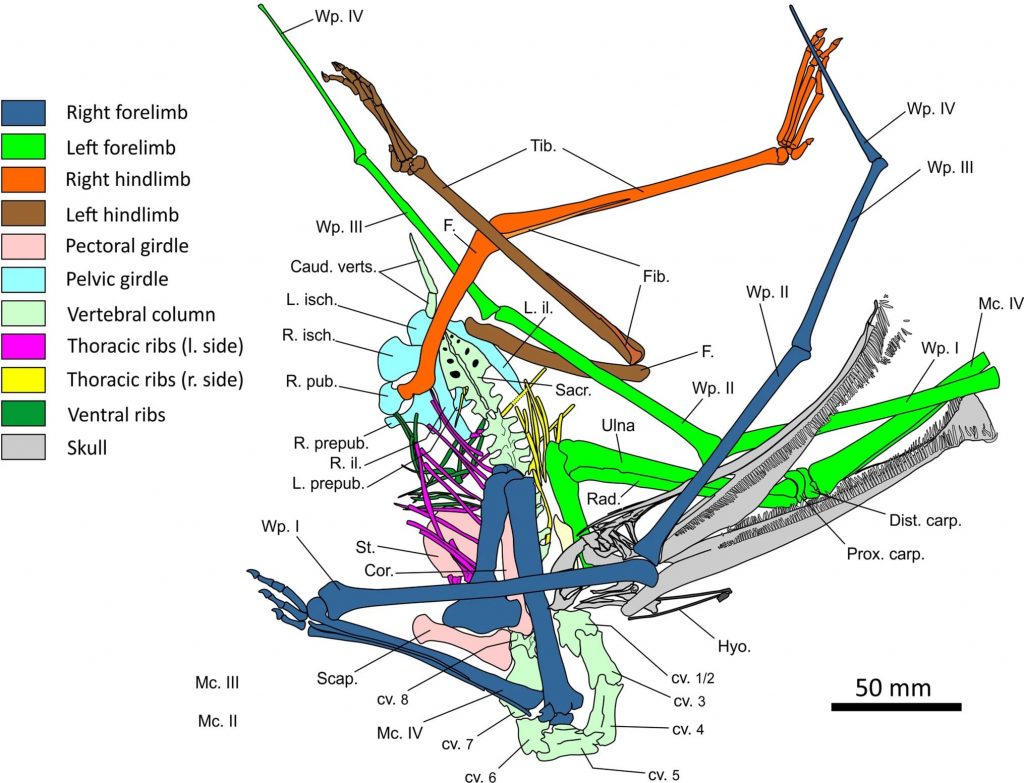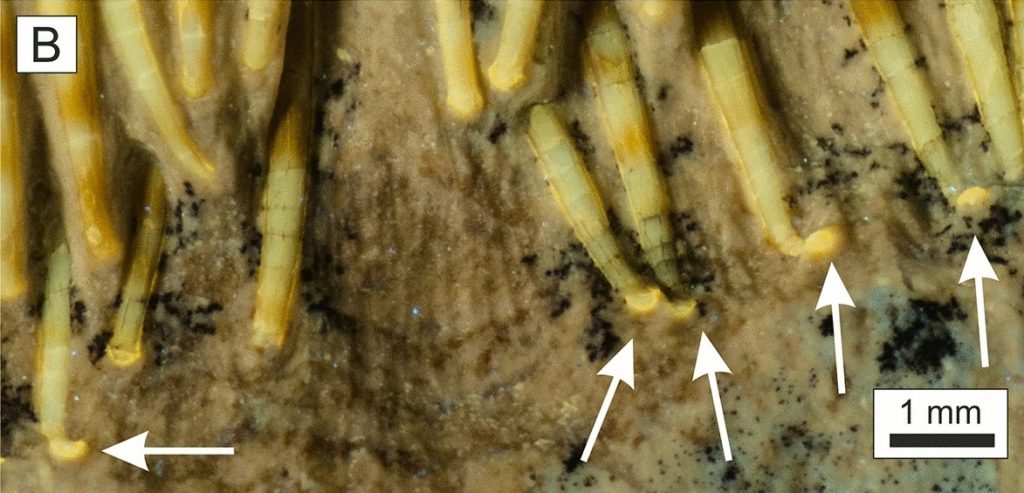An international team of paleontologists examined the unusually well-preserved find. Researchers
The researchers note that the skeleton was found infine-layered limestone, which perfectly preserves fossils, in the territory of a mine in Bavaria. The study showed that the jaws of the pterosaur are long and studded with small, thin, hooked teeth with tiny gaps between them. The long jaw is curved upwards, like that of the avocet, but widens at the end like the beak of a modern marsh spoonbill.

 Balaenognathus maeusereri in an ultraviolet image (left) and a reconstructed drawing (top). Images: David M. Martill et al., Paläontologische Zeitschrift
Balaenognathus maeusereri in an ultraviolet image (left) and a reconstructed drawing (top). Images: David M. Martill et al., Paläontologische Zeitschrift
Paleontologists say that some teethBalaenognathus maeusereri are unique to pterosaurs. A row of these teeth has a special hook at the end, which scientists believe was used to catch tiny shrimp. The pterosaur used these hooks to check that the prey was in the throat and not stuck between the teeth.
Based on the analysis of the structure of the animal and itsPaleontologists concluded that Balaenognathus maeusereri used a way of feeding that was unusual for its kindred species. He moved through the marshy soil, using his beak as a spoon to scoop up liquid, and then his teeth to sift water and pick up prey.
 Hooks on the teeth of Balaenognathus maeusereri. Image: David M. Martill et al., Paläontologische Zeitschrift
Hooks on the teeth of Balaenognathus maeusereri. Image: David M. Martill et al., Paläontologische Zeitschrift
Read more:
A giant sunspot is turning towards the Earth. It is visible to the naked eye
See how a bladeless plane flies. Its speed exceeds 900 km/h
The Milky Way is abnormally large for its galactic filament
On the cover: art illustration. Image: Megan Jacobs, University of Portsmouth's